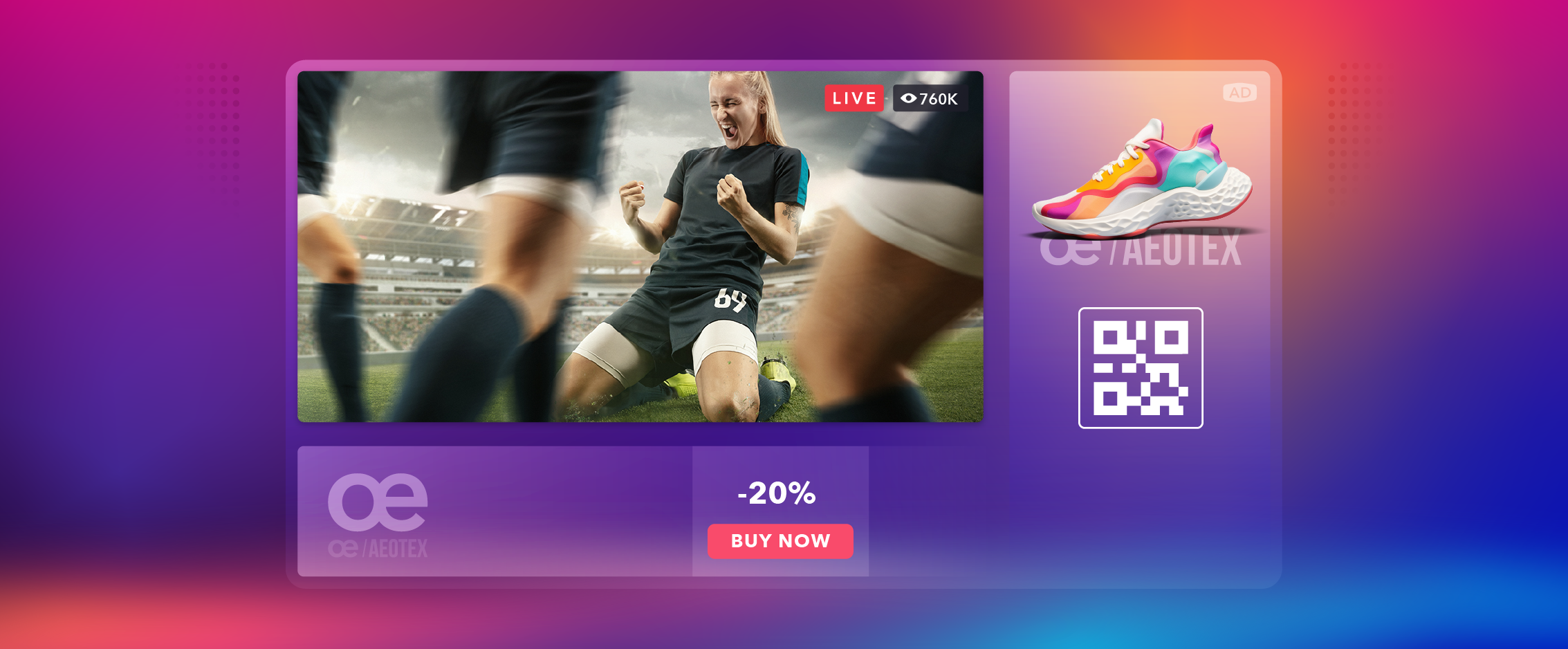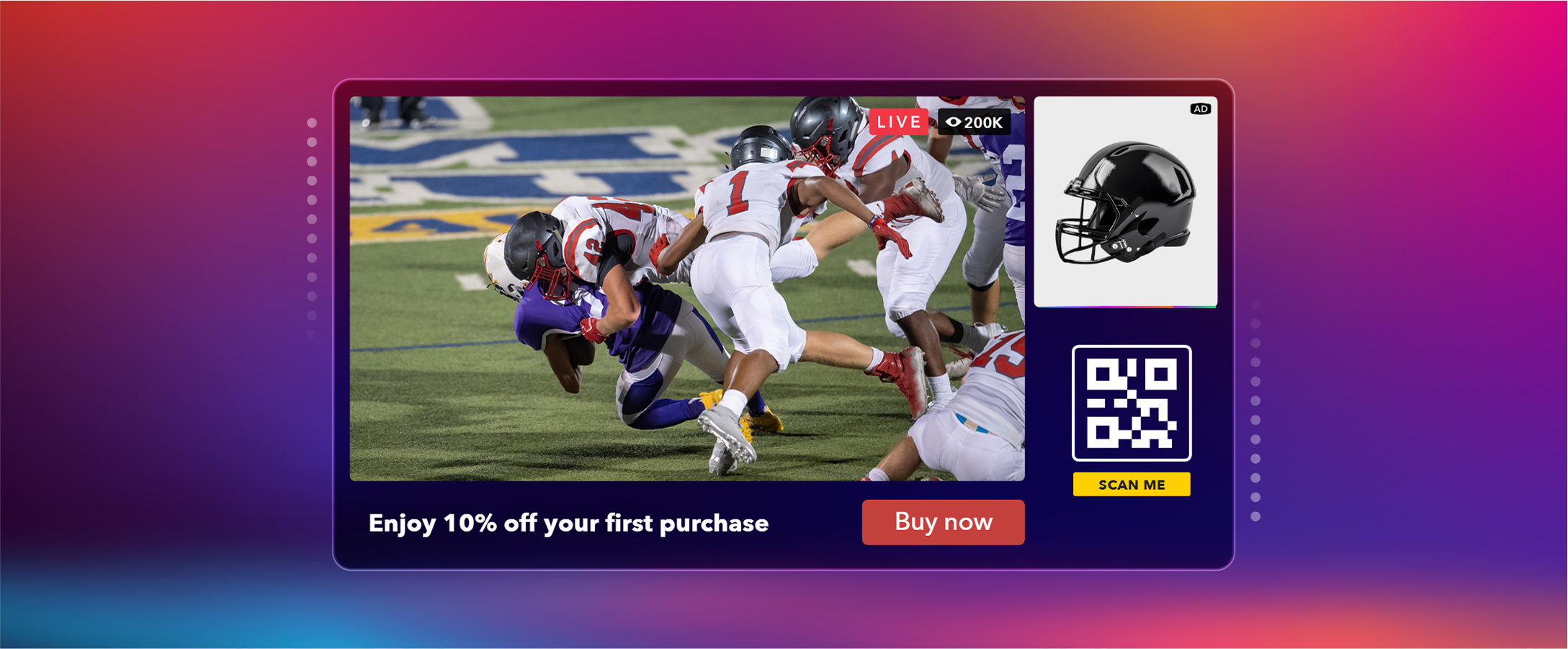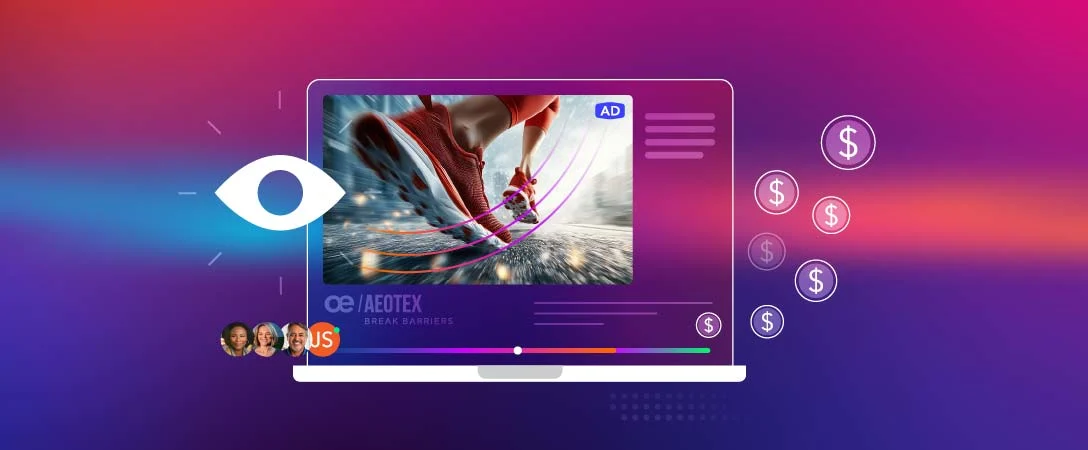Creating successful ads is both a science and an art. In addition to being visually appealing, ad layouts must tap into the psychological triggers that urge consumers to take action.
When it comes to creating video ads, the classic layout rules are turned on their head, and boundaries are extended. However, with real-time streaming, many media publishers are getting even more creative with their ad-insertion layouts to serve ads without disrupting the content.
In this article, we’ll discuss everything you need to know about advertisement layouts in video streaming. We’ll first look at what an advertisement layout is and what essential components it includes before diving into the specifics for video ads.
What is an advertisement layout?
An advertisement layout is the general structure of an ad. An effective ad layout typically features a clear hierarchy of information, a balance between essential content and aesthetic design elements, and a clear call-to-action (CTA). There are different types of ad layouts, but generally, they include headings, copy, and a call to action.
Ads with these elements are structured to quickly capture consumers’ attention and urge them to take the intended action.
When it comes to video ads, the layout is dynamic. Video ad layouts are a bit more flexible since the format allows them to cover more ground. The design is dependent on the script and the storyline.
5 Components of video ad layouts
There are a few standard components of video ad layouts. As we review these components, remember that since video ads are dynamic, the layouts are not as rigid as static ads on the internet or in print.
With that said, here are five common components of a video ad layout.
1. Imagery
The imagery is typically the most critical aspect of a video ad. This includes the footage filmed for the ad and any graphic overlays. The type of footage used depends on the ad’s style, but it could range from user-generated content to professionally taped footage.
Typically, the imagery is designed to support the ad’s storyline while incorporating branded elements to make the brand easily recognizable.
2. Audio
Audio is another critical element of a video ad, as it plays a massive role in getting the point across. Voice-overs and speaking subjects on screen are very common in ads.
Music and sound effects are typically used to make the ads more compelling. Depending on the scale of the brand, some advertisers will produce custom beats or jingles for their ads. However, most buy licensing to existing music or use a royalty-free alternative.
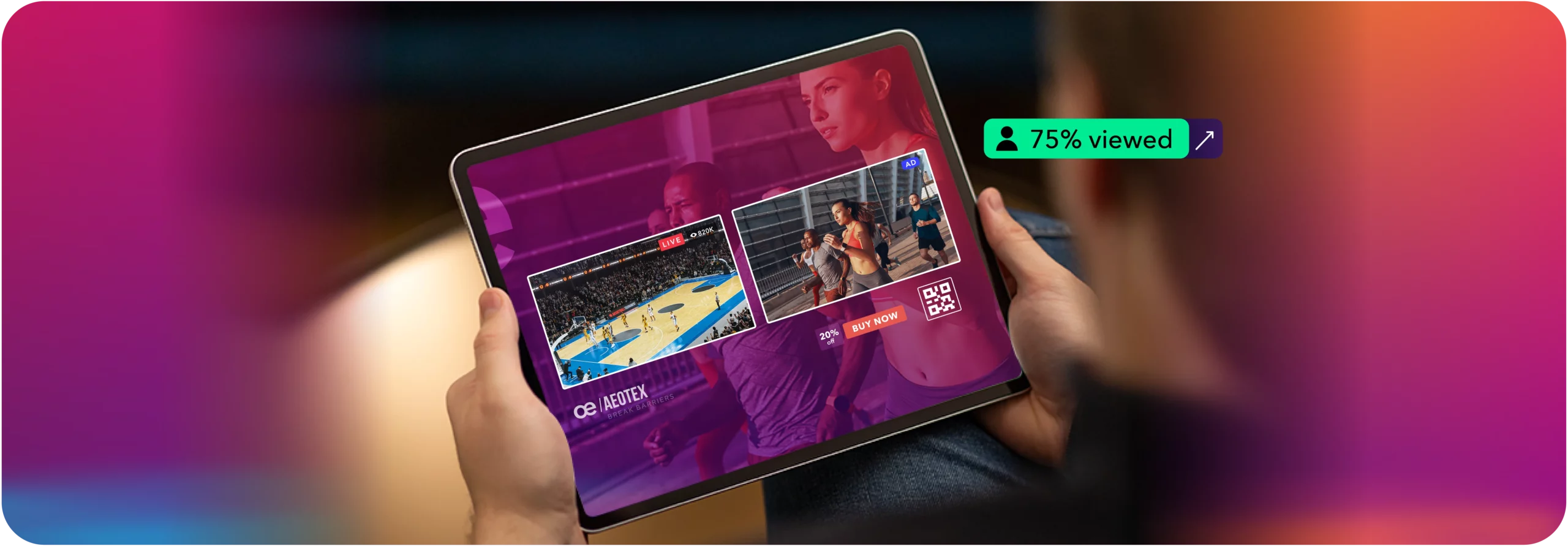
3. CTAs
The point of most ads is to drive action, whether urging users to visit a site for more information or to make a purchase. Ads only present a short window to encourage viewers to take the intended action, so it’s vital to use calls to action (CTAs) to point your viewers in the direction you’d like them to take.
There are a few ways to incorporate CTAs in video ads. Many advertisers keep it simple by instructing viewers to visit a website for the next steps.
QR codes are a great way to streamline the viewer-to-customer pipeline because they enable users to get to the right place on a mobile phone without worrying about copying down the URL correctly. Viewers can simply open their camera app and scan the code to be taken right where they need to be.
Depending on the streaming destinations, advertisers could include clickable CTAs within or around the video player. This works best on mobile and desktop streaming. Some smart TVs support interactive video players that enable brands to add clickable elements, but it’s still not commonplace.
4. Copy
Copy is another critical component of many ad layouts. You’d use copy for headings, body text, and CTAs in static ads. However, text can be used in video ads at any part of the video, so these bits of copy will look a little different. It’s often used to highlight key points alongside the spoken script of the ad.
Since frames move quickly in video ads, keeping copy concise and skimmable is key. Large blocks of text aren’t ideal in any ad layout, but they should certainly be avoided in videos.
5. Production elements
Something unique to video ads is that they can use creative production elements, such as cinemagraphic transitions or animations, to make the ad more visually appealing. Some ads also include subtitles, especially if they feature a mix of different languages or include audio that may be hard to understand.
Popular styles of video advertisements
Advertisers use a few styles of video advertisements. These include:
- Testimonial-style ads
- Skits
- Ads featuring a celebrity guest or brand spokesperson
- Animated cartoons
- Static in-player ads (alongside stream or overlays)
As a broadcaster, you don’t necessarily have any say on what style of video advertisements are played on your content. There are some minor exceptions if you use Client-Side or Server-Guided Ad Insertion. In these cases the ad-insertion layouts are a bit more flexible. We will talk about this a bit more later in this article.
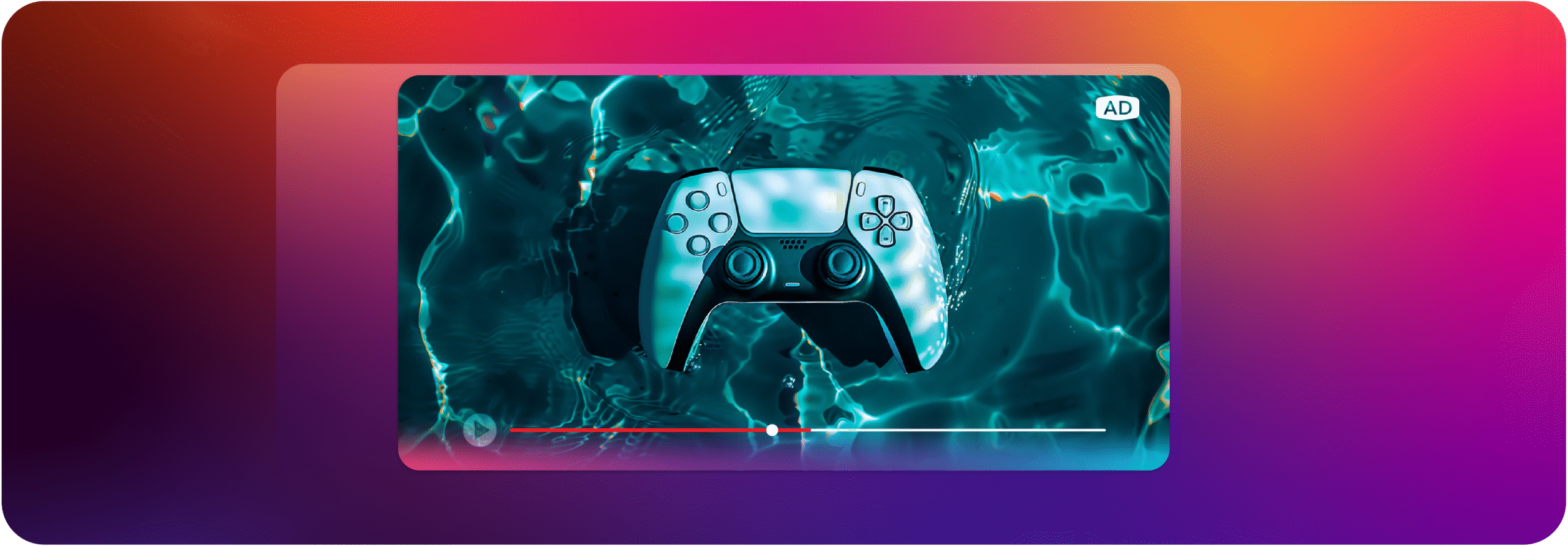
Challenges of ad-insertion layouts in streaming
Streaming advertising has proven valuable since it provides cheap, personalized, and interactive advertising opportunities. However, nailing the insertion layout so the ads do not hinder the viewer’s experience has presented some challenges.
Until recently, serving ads during live streams was difficult. Although it was possible to add ads to a stream, timing them so they wouldn’t cut the live stream off and cause viewers to miss part of the stream was challenging.
Interruptions in the stream compromise the user experience, which can frustrate viewers and cause them to disengage or leave the stream.
How SGAI improves ad-insertion layouts in streaming
Server-Guided Ad Insertion (SGAI) is an innovative ad-insertion technique that puts the video player in the driver’s seat. As we mentioned, SGAI and Client-Side Ad Insertion (CSAI) both give the broadcaster more control over the ads served in their streams.
SGAI specifically offers opportunities for L-shaped ad-insertion formats that make the ads less invasive. With SGAI, the stream can be scaled down with a picture-in-picture (PiP) effect to create room within the video player so the advertisement plays alongside the stream.
When a player uses SGAI to serve ads and supports an L-shape ad-insertion layout, the ads are pulled from the available L-shape ads assets. Since content publishers are not involved in creating those L-shaped ads, they rely on advertisers or the ad-insertion platform to provide those assets.
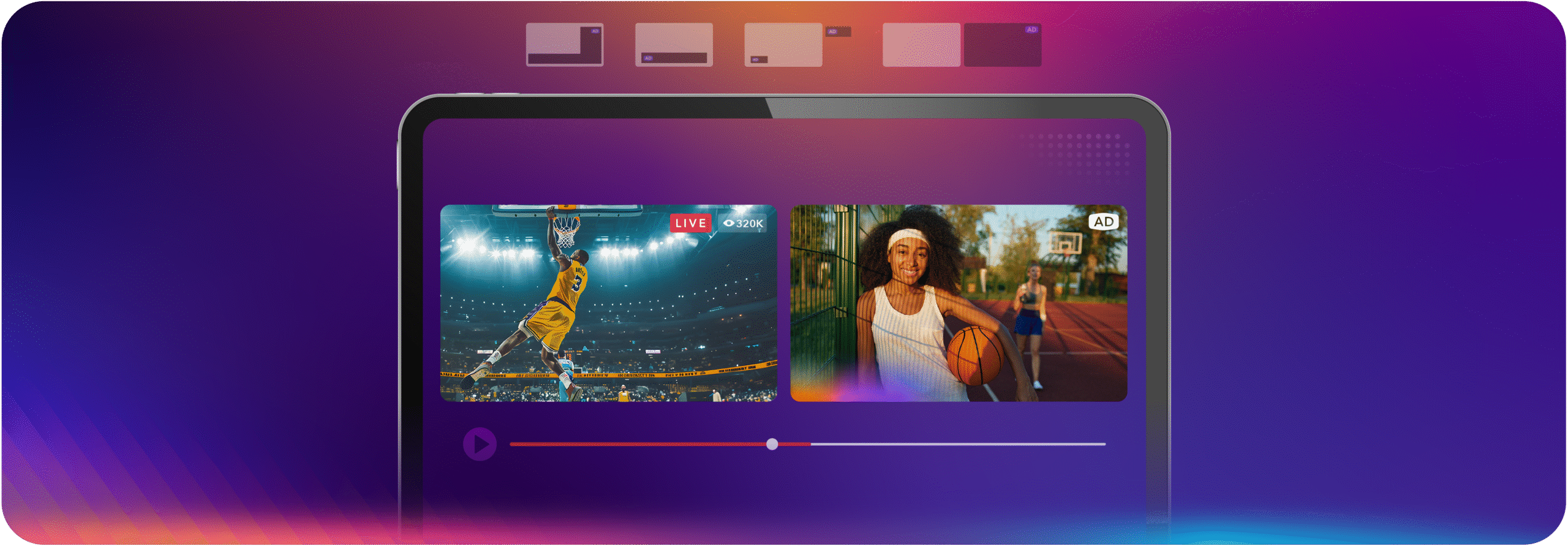
When ads are played alongside the stream in this layout, broadcasters can trigger time-sensitive advertisements that are relevant to what is playing out in the stream. Plus, with this layout, viewers never have to miss a moment of the stream.
SGAI also allows broadcasters to deploy a personalized ad experience with a double-box insertion layout or clickable overlay. This breaks all previous barriers in ad-insertion layouts as it curates the experience to viewers’ unique preferences, opening doors to deeper engagement opportunities.
Final thoughts
Video ads defy the rules of standard layouts since they create a more dynamic user experience. Thanks to SGAI, it’s now possible to serve ads during live streams without disrupting the content. This innovative ad-insertion layout is changing the game for all parties involved, creating richer viewer experiences while providing better results for advertisers.
Are you ready to enhance your viewer experience by improving your video ad-insertion layouts? Dolby OptiView’s SGAI technology is here to help. Contact us today to learn how our innovative advertising solution can help you boost your revenue.



